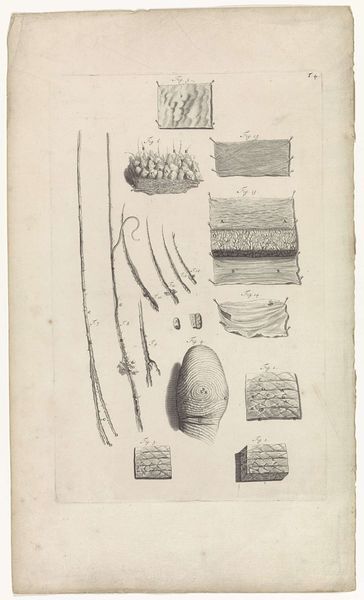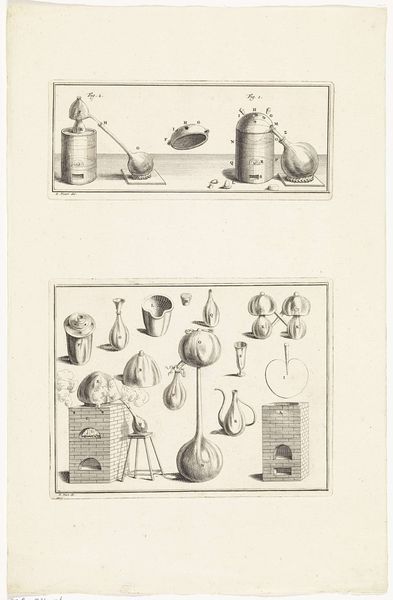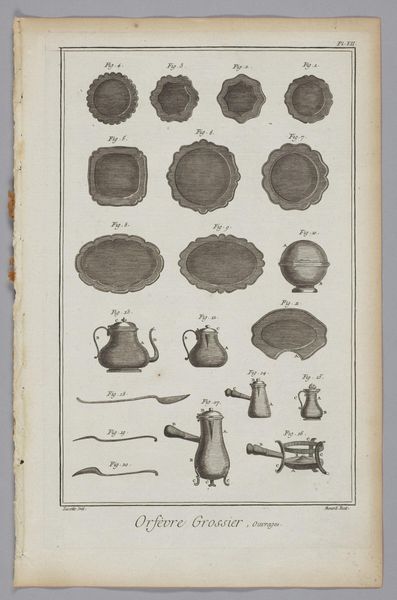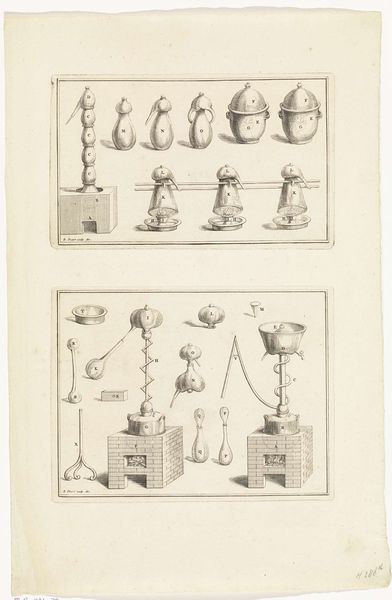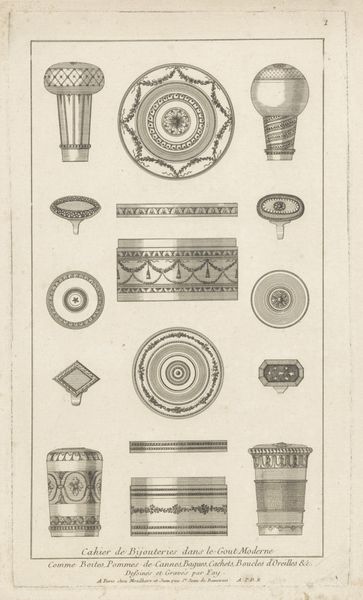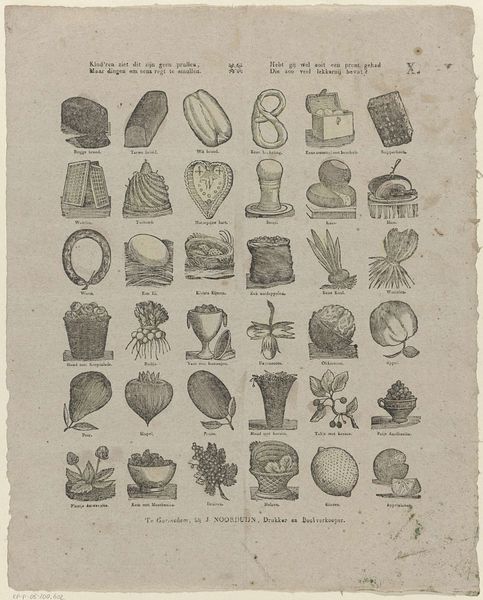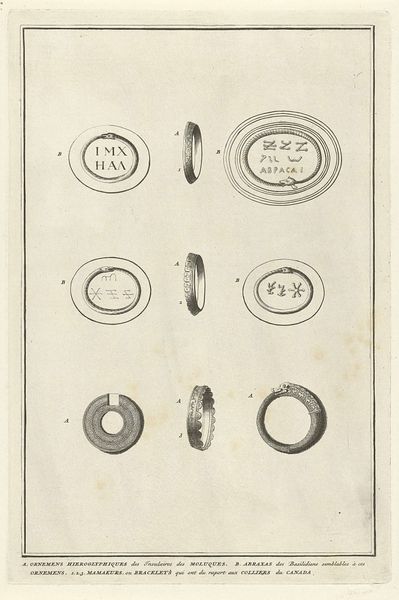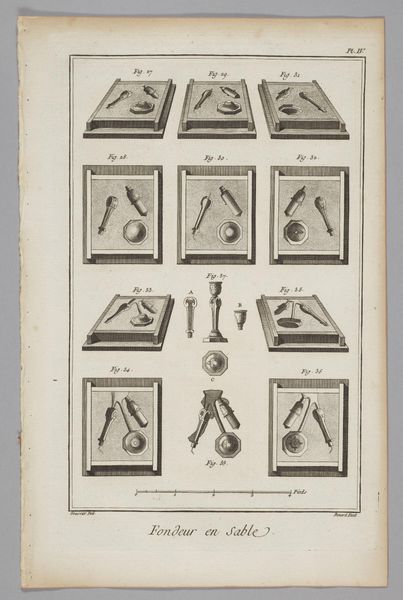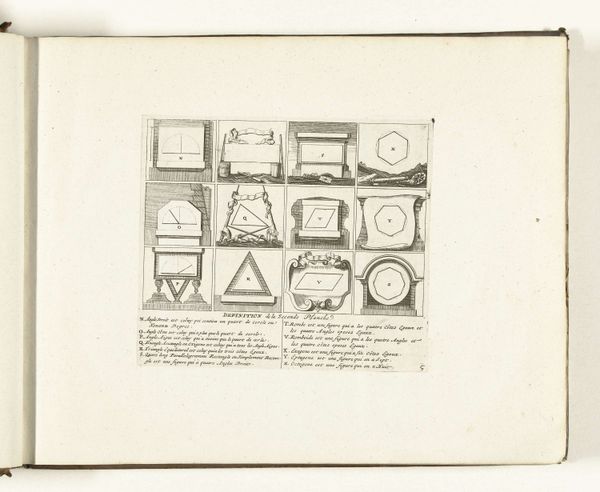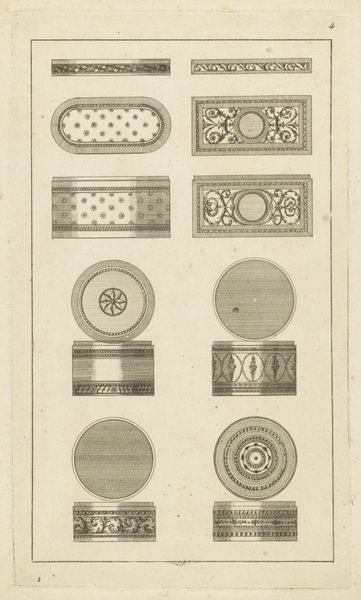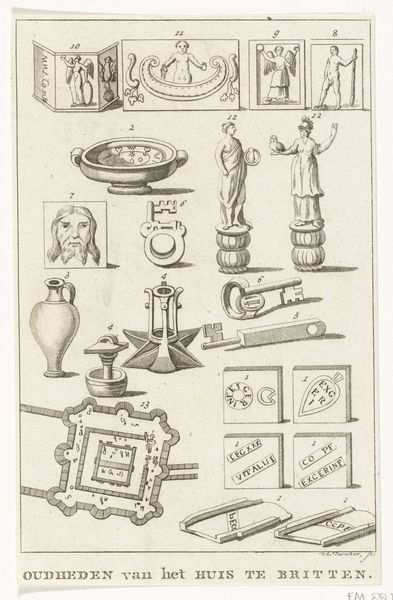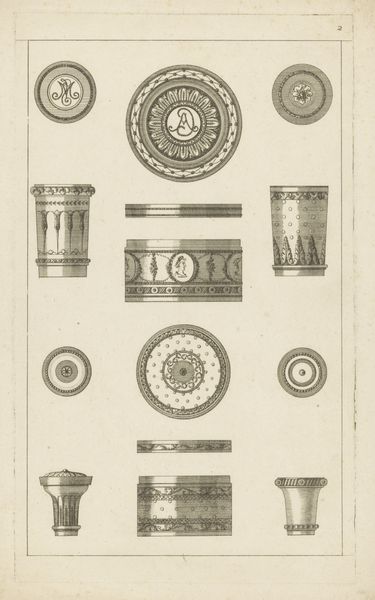
drawing, print, paper, ink, engraving
#
drawing
#
neoclassicism
# print
#
paper
#
ink
#
history-painting
#
academic-art
#
engraving
Dimensions: height 163 mm, width 102 mm
Copyright: Rijks Museum: Open Domain
Curator: The piece we’re looking at is an engraving called "Oudheden gevonden in de hunebedden" made between 1788 and 1790 by Noach van der Meer (II). It’s an academic-style print depicting artifacts found in ancient burial mounds. Editor: It’s essentially a catalog, a page of carefully rendered objects. The starkness of the print gives it a documentary feel. How do you read this collection of objects, given that they've been extracted from the earth and placed on the page? Curator: Well, consider the labor involved. Each object, painstakingly unearthed and then meticulously depicted in this engraving. Look at the care taken to render the texture and shape of each pot, tool, and ornament. What does it tell us about the value placed on these relics and on the act of their representation, their journey into a print format and social consciousness? Editor: So, it's about how the discovery and reproduction transforms these ancient tools from functional items into... commodities? Curator: Exactly! They transition from everyday use objects embedded within the earth and community to items of study and perhaps even status in the late 18th century. The printing press enables mass production and broad distribution, thereby democratizing the knowledge of antiquities but it's also separating these relics from their original function and creating a symbolic marketplace. Editor: That makes sense. The objects themselves might tell a story of early craft and society, but the print adds a layer about Enlightenment-era collecting and knowledge production. Curator: Precisely! It reveals as much about the past as it does about the present in which it was created. It is as much about excavation, creation, labor and society and less about purely academic study. What I am most fascinated by is the impact of the work on popular society through print production. Editor: It’s interesting to think about the multiple lives an object can have – first as a tool, then as an artifact, and finally as an image, remade in ink and paper. Curator: Indeed! This exploration reveals how material objects and their representation play crucial roles in reflecting on historical perspectives on consumption and culture, even those we might think are lost.
Comments
No comments
Be the first to comment and join the conversation on the ultimate creative platform.
